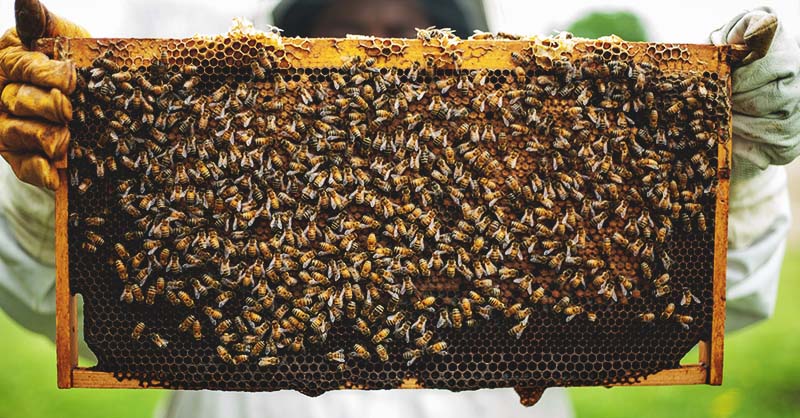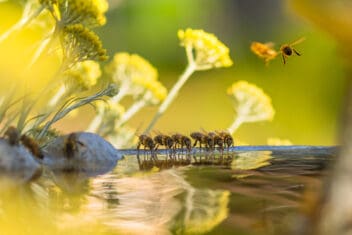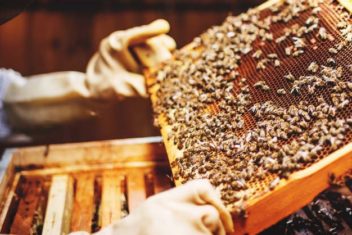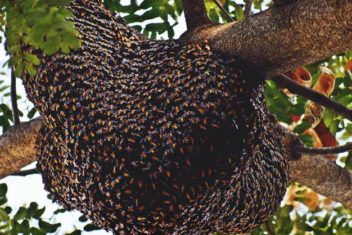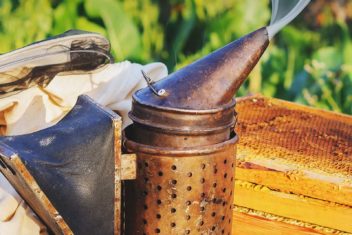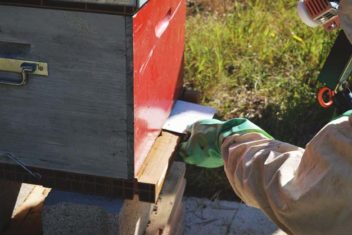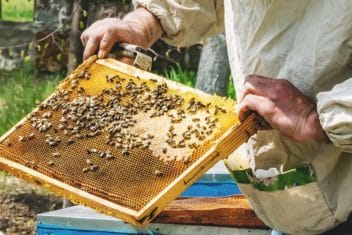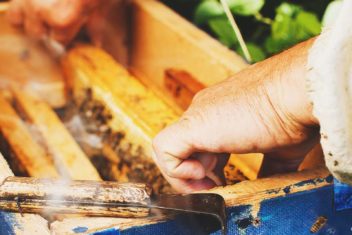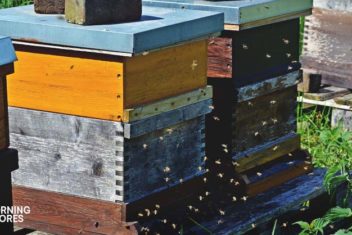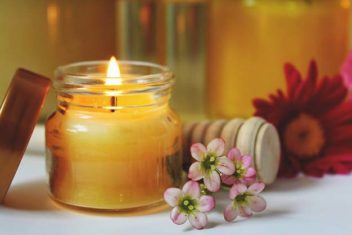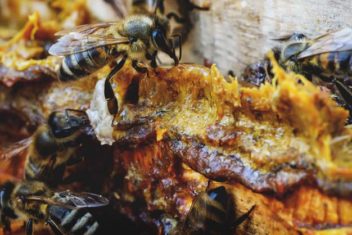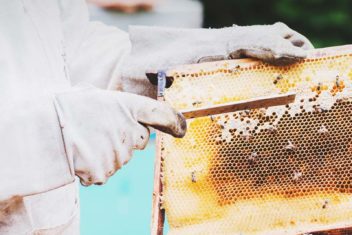If you’re not already familiar with honey bees, you may not be aware of the tremendous benefit they are to our planet.
Of course, bees produce the sweet honey that we love to add to a hot cup of tea, but they’re also integral to the process of growing many fruits, flowers, and vegetables.
They are hardworking pollinators and without them, plant and flower production would suffer.
The American Beekeeping Federation states: “Honey bees contribute nearly $20 billion to the value of U.S. crop production. This contribution, made by managed honey bees, comes in the form of increased yields and superior quality crops for growers and American consumers. A healthy beekeeping industry is invaluable to a healthy U.S. agricultural economy.”
Beekeeping is helpful for many industries, but it’s also greatly beneficial to backyard gardeners and homesteaders.
If you’ve wondered about getting your own hive but weren’t sure where to start, check out our handy beginner’s guide below.
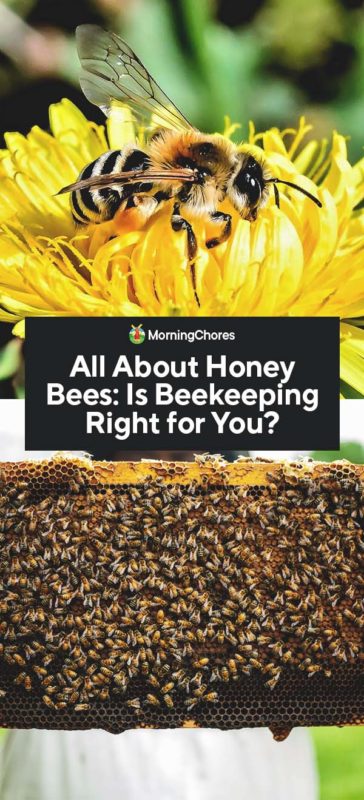
Can you Keep Bees?
The first question you may ask yourself is if beekeeping is right for you. Here are some points that you might want to consider before bringing home your first bee colony.
Zoning and Legal Restrictions
Where you live will have a significant impact on whether or not you can legally keep bees. There are also different regulations for different areas, so you’ll first want to check with your local municipality.
You may also want to consider your neighbors. Some neighbors may be intimidated by your bees. Communicating with your neighbors about the usefulness of bees would be a step in the right direction. The more they understand what you’re doing, the less concerning it will probably be to them.
Though it may be surprising, living in an urban area does not necessarily mean that you can’t keep bees. Several major cities now welcome bees including Los Angeles and New York City.
Again, the most important thing to do is to check the city ordinances to make sure you’re legal.
Start-up Cost and Cost of Keeping Bees
As with most homesteading projects, the cost can vary widely. You can use the most expensive equipment, or you can buy used clothing and equipment to get started.
While it is possible to build your own hives and catch a wild swarm, this would be a difficult way to begin.
For this reason, we will be giving you a rough idea of start-up equipment and operating equipment.
– Start-up Cost
– Equipment for Harvesting and Storing Honey
- Honey jars
- Uncapping tool
- Buckets
- Honey strainer
- Bee brush
- Extractor (needed for large quantities of honey)
– Operating Equipment
- Mite Control
- Feed in winter and dearth – ranges greatly based on type and quantity
- Hives for expansion
There are plenty of additional ancillary items that might be useful to you, but you’ll have a better idea of which ones are necessary to you once you dive deeper into beekeeping.
What Does Your Time Commitment Look Like?
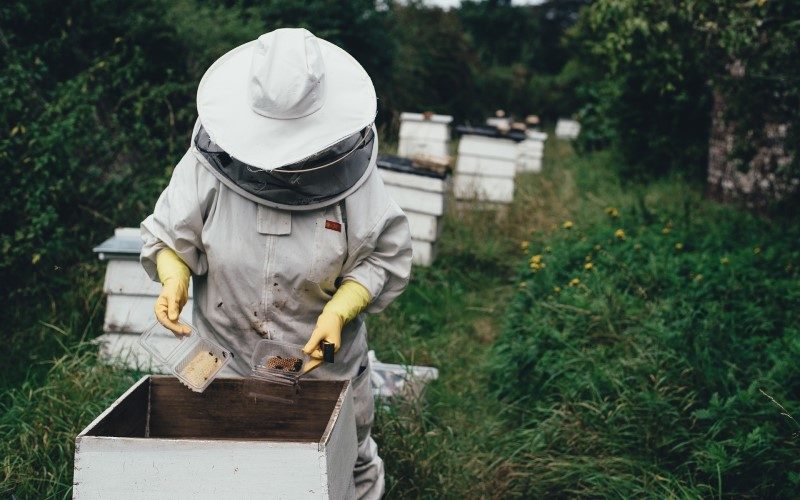
Another thing you’ll want to take into consideration is whether or not you have time to care for your bees.
There are going to be large portions of the year when the bees require very little from you. In fact, it’s better to let them alone when your interference isn’t necessary. Still, there are times when you will need to be involved. And of course, there is the time involved harvesting the delicious honey!
Your first year is going to take more time as you set up a home for your bees and prepare for their arrival.
Many people suggest that caring for honey bees will take 15-30 hours a year per hive. However, this does not include research that you may put in to be a better beekeeper. It also doesn’t include the time you will enjoy sitting and watching your happy little workers!
I know my family and I have spent a great deal of time watching the bees fly in and out of their boxes. It gives you the most amazing feeling knowing that they’re healthy and thriving.
Many people who are interested in bees genuinely enjoy the time spent with them and feel very fulfilled when they see their hives grow and produce honey.
Common Honey Bee Stock
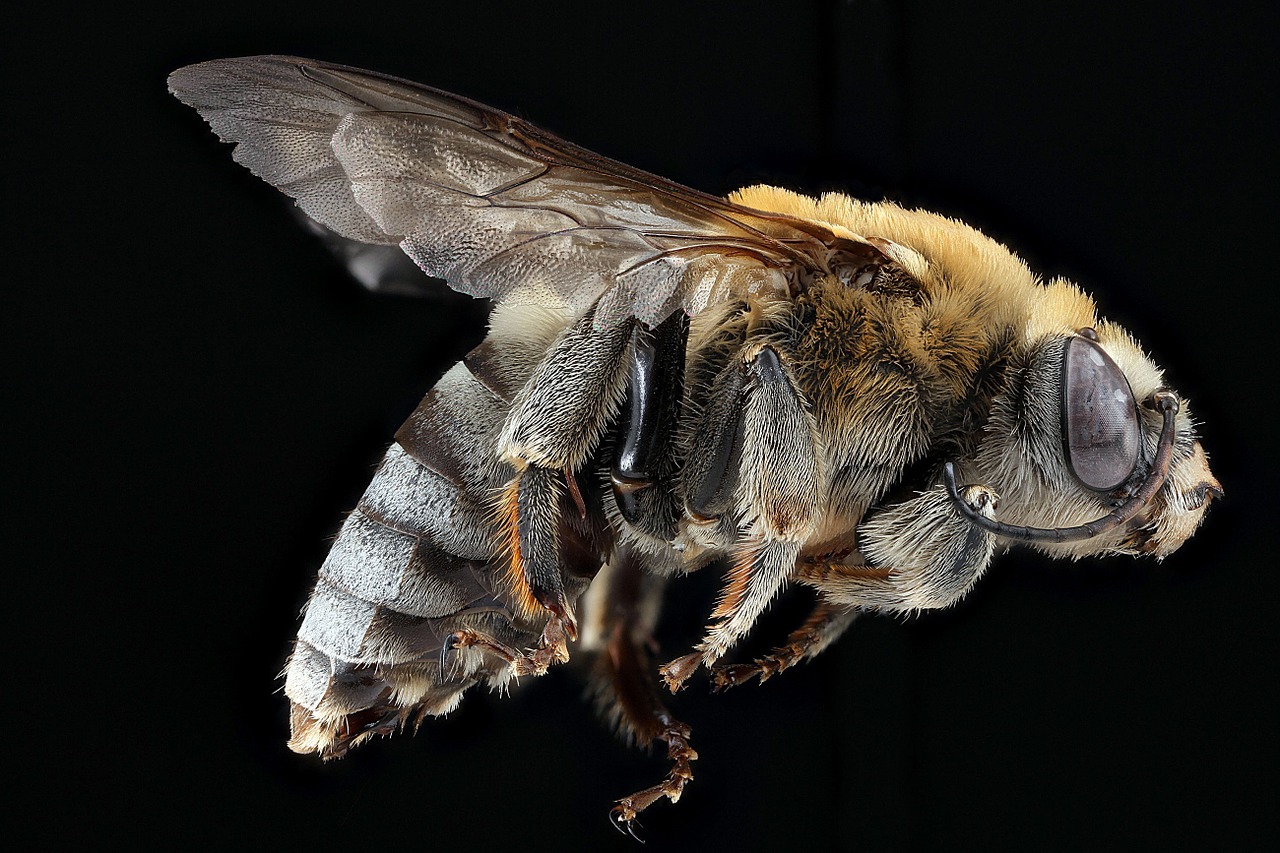
Before you can purchase your first set of bees, you’ll need to know what kinds of bees are available. This will also help you determine which bees will do best in your area.
It should be noted that there are not really any “pure” bee species, as your bees are going to breed with other bees in the area. This will create a new hybrid of bee species.
1. The Italian Bee
The Italian bee is the most common race of honey stock bee. These bee species were brought from Italy to the US in 1859.
This type of bee is popular because they are hearty producers and have prolific brood cycles. They also have a gentle nature and are less likely to swarm than other bee stock.
2. The Russian Bee
The Russian bee was brought over to the US in 1997. US bees were suffering from something called colony collapse, a significant problem that caused some beekeepers to lose as many as 30-90% of their hives.
In response, the USDA introduced the Russian bee because they were known for withstanding parasites. Parasites were known to be one of the factors related to colony collapse, and they hoped this stock would help save US bees.
These bees are a bit more aggressive than the Italian bee. They’re also hard to come by in the US.
3. The Carniolan Bee
The Carniolan bee is another very popular type of honey bee. These bees are known for being docile, and they are heavy Spring producers. They also have one of the longest tongues of the bee species making it easier for them to pollinate crops like clover.
This bee stock is more tolerant of colder climates and they do well with overwintering.
One of the less appealing things about these bees is they are more likely to swarm than other bee stock.
4. The Buckfast Bee
This bee stock was originally hybridized in Buckfast Abbey, located in the UK. It’s very popular for places that have similar climates to the British Isles.
They’re known for having strong resistance to some parasites, and they’re also known for being good foragers. Another perk is that they’re unlikely to swarm.
This bee stock is not common in the US, and they do suffer from inbreeding which has weakened their resilience against pests in some cases. Additionally, they are more aggressive than the Carniolan or Italian bee.
5. The Caucasian Bee
The Caucasian bee was once very popular in the US. However, it has lost popularity over time because they are not strong honey producers.
For those who are looking for a bee stock primarily for pollination, these bees are still a good choice. They have very long tongues which make it easier for them to pollinate flowers with greater depth.
6. The German Bee
The German bee is derived from the European Dark bee which originated in Northern Eurasia.
This bee stock was once popular because they are able to winter better than many other strains of bees, and they are great at defending their colony.
Their dark color is distinct, and they are larger than many other honey bees.
Unfortunately, these bee stock is susceptible to the brood diseases known as American and European foulbrood. For this reason, they’re not a very good choice for first-time beekeepers.
The Queen, the Drones, and the Workers
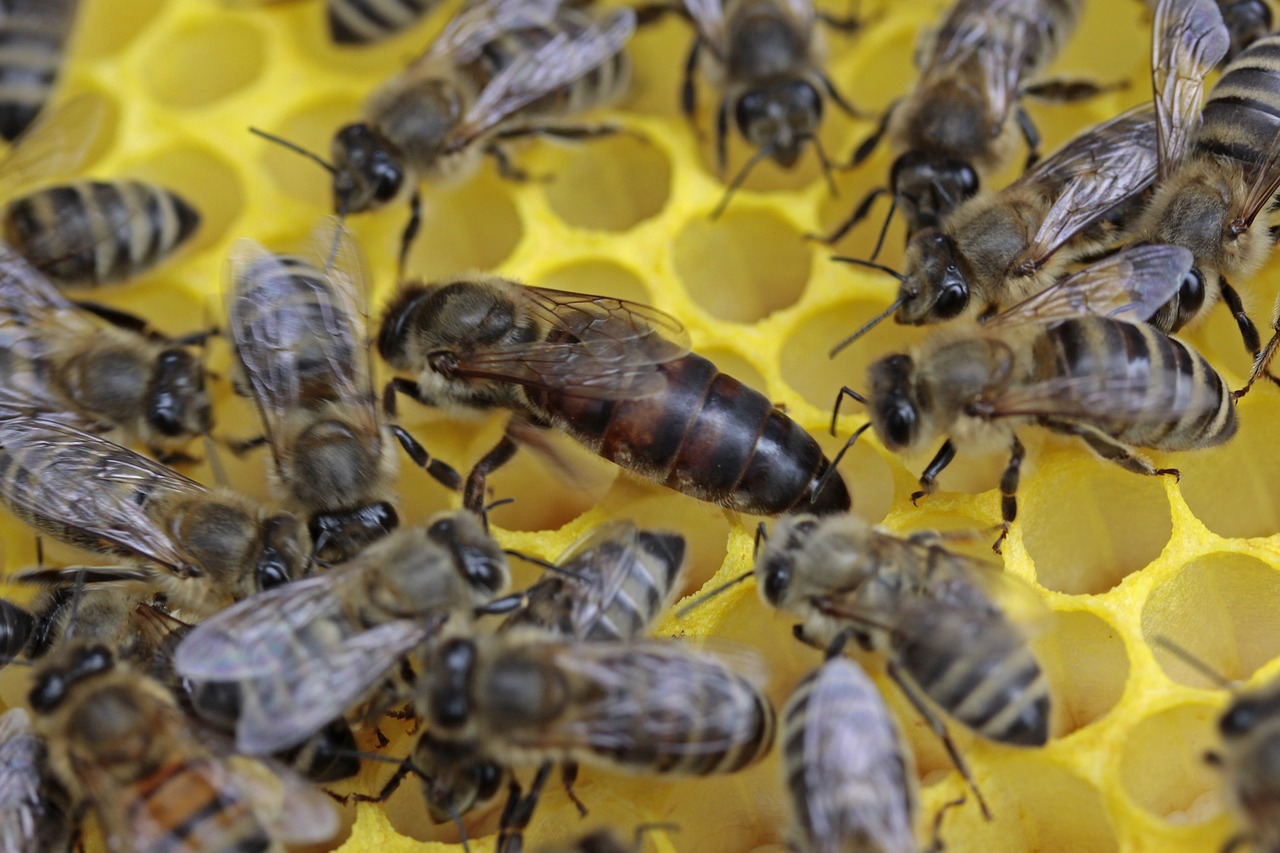
Every honey bee colony is broken into 3 types of bee: The Queen, the drones, and the workers.
Each member of the colony is vital, but they each provide a very different role.
1. Queen Bees
The queen is the single most important member of a bee colony. This is because they are the only member who is able to lay fertilized eggs.
After a queen bee is born, she will begin her mating flights. During these flights, she will mate with approximately 10-20 different drones. Later, the queen bee will start laying eggs. Amazingly, she is capable of producing up to 2,000 eggs in a single day.
Though it may be contrary to her name, the queen bee is not in charge of the hive. In fact, it’s the worker bees who really drive the decisions. They are the ones who decide when to raise a new queen or when to kill an existing one.
2. Worker Bees
In a honey bee colony, worker bees are all female.
Young worker bees do everything from caring for the queen and young larvae to producing wax, to building structures.
Once the worker bee ages, they are likely to graduate to outside chores. During this time they will take their first flight. Soon after, they will begin foraging to collect nectar, pollen, and water.
Honey bee foragers are susceptible to many outside dangers like predators, storms, and diseases. These risks greatly reduce their life expectancy, and many of them will die 30 days after they began foraging.
During the winter when bees huddle together to stay warm, they are capable of living for 6 months or more.
3. The Drone
Drone bees are the only males in a colony. Unlike female worker bees, they do not have a stinger.
These male bees are only present for a few months in a year. They are distinct from the female bees because their eyes are much larger.
Their job is to leave the hive and locate queen bees to mate with. They are responsible for spreading the genes of their colony to other queens.
Once they have mated with a queen their life cycle ends.
The Anatomy of a Bee

Bees are insects and they share 5 common characteristics with other insects.
- An exoskeleton
- Three main body parts: the head, the thorax, and the abdomen
- A pair of antennae
- Three pairs of legs
- Two pairs of wings
The head of a honey bee contains eyes, antennae, mandibles, and a brain. The thorax holds the legs and the wings.
Lastly, the abdomen contains a stinger, wax glands, and reproductive organs.
The exoskeleton of the honey bee is mostly covered in a layer of hair that helps regulate temperature and collect pollen.
Additionally, the honey bee has something called a proboscis which is another name for their tongue. The proboscis helps bees reach the center of a flower, and it can also be used for grooming.
A female honey bee has something called a “pollen basket.” As the worker bee gathers pollen, she stores it for later. Another name for this apparatus is a corbicula.
The corbicula is located on the tibia of the hind legs. When a bee visits a flower, she grooms herself and brushes the pollen she has collected into her pollen basket. She often mixes a little nectar into the pollen to make it stick together. The hairs in her pollen basket keep everything in place.
Beekeeping for All
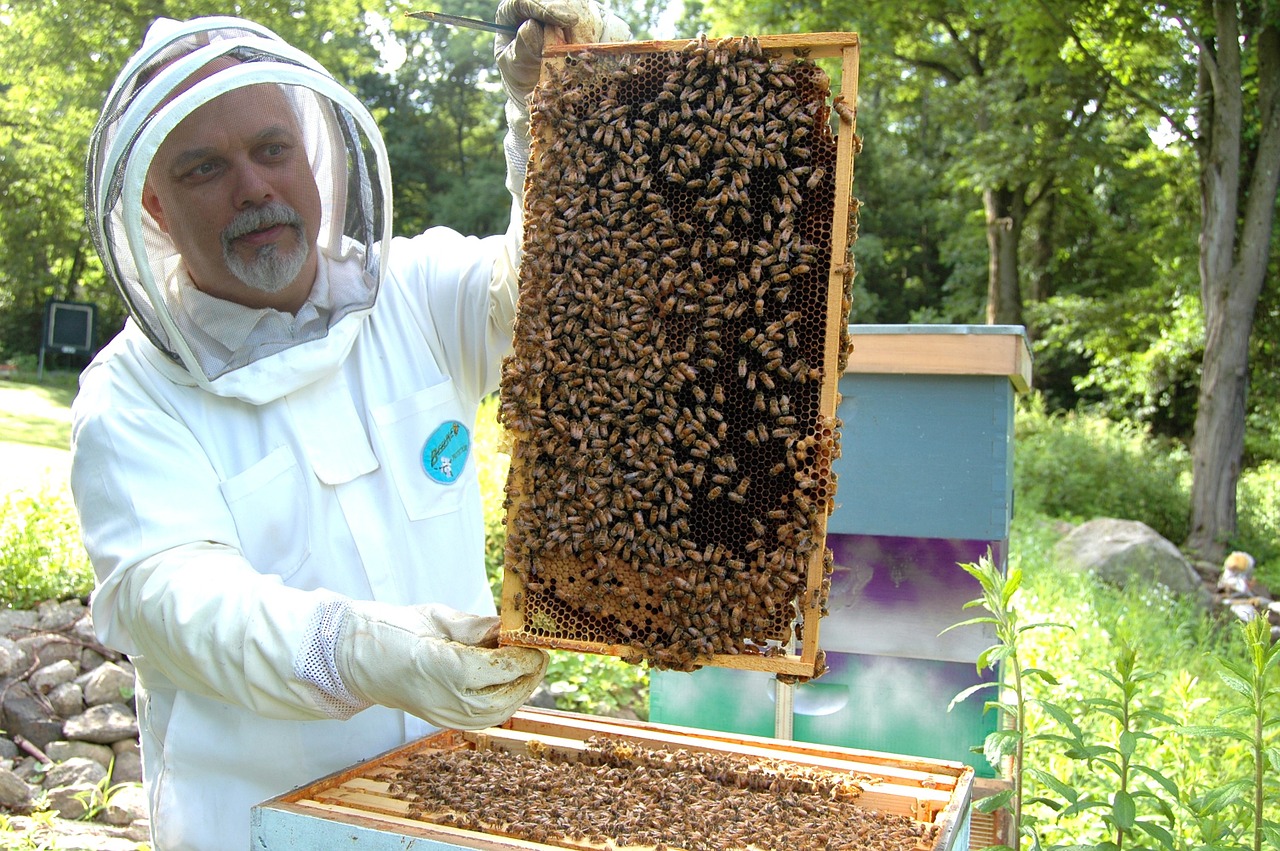
Beekeeping is a time-honored practice enjoyed by many commercial businesses and enthusiasts alike.
When deciding if beekeeping is a good fit for you, consider your purpose for having bees. Do you want your own raw honey and beeswax? Would you want amazing pollinators in your garden? Or do you want to benefit the environment? Maybe all of the above?
Perhaps you’ve always loved bees and want to take part in the life of these fascinating insects.
Whatever your reason, weigh out the costs and the benefits and decide if you’d like to try your hand at beekeeping.
Beekeeping may have trials, but many beekeepers agree that the honeybees give back more than they take.
